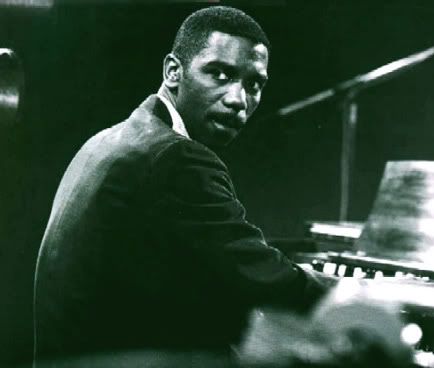

Jimmy "Hammond B3" Smith
(1925-2005)
Jimmy Smith surgiu na cena em meados da década de 50. Um dos mais importantes nomes da Blue Note, Smith elevou o órgão do estatuto de novidade ou curiosidade no jazz, a alturas de poder ser considerado entre os instrumentos primordiais do género. A favor de Jimmy Smith pode ainda ser creditada a liderança do sub-género soul jazz, que fez furor durante toda a década de 60. Fundamentalmente, entre 1956 e meados da década seguinte, na Blue Note, casa para a qual gravou 21 discos, o auto-didacta Jimmy, que pensava o órgão como um instrumento de sopro, estabeleceu um novo paradigma estético de modernidade na execução Hammond, influência que perdurou até aos dias de hoje. Em 1964, Jimmy Smith publicou um artigo na revista Hammond Times (Vol. 26, n.º 26 – Julho/Agosto). Intitulado Incredible!, a peça, escrita na primeira pessoa, ilustra a concepção musical de Smith e conta como o músico construiu o seu notável percurso, que marcou profundamente o som de uma época.
My first Hammond Organ was bought ten years ago [1954]. I was playing piano in small bands around Philadelphia and was so impressed with the incredible number and variety of sounds you can get with the Hammond that I couldn't rest until I had my own. I never did take lessons, just taught myself. First, I learned about the drawbars and what each one stood for. As time passed, I experimented trying out all the different sounds. Next came the presets. I tried them out too but I don't use them very much except when playing ballads or something sweet and soft. When it came to the foot pedals, I made a chart of them and put it on the wall in front of me wo I wouldn't have to look down. My first method was just using the toe. In the earlier days I was a tap dancer so the transition to heel and toe playing was made without too much trouble. One thing I learned was that you have to have a relaxed ankle. I would write out different bass lines to try for different tempi in order to relax the ankle. One useful learning technique was to put my favorite records on and then play the bass line along with them to see if I could play the pedals without looking down and only occasionally using my chart on the wall. This worked out fine. When you are properly co-ordinated, you get an even flow in the bass. Most often, organists are uneven in their playing of the pedals, heavy here and light there. Soon I was putting hands and feet together and achieving co-ordination. My first job with the organ was at a Philadelphia supper club, playing a duo with drums. It was here I began further experimentation with different drawbar settings and using different effects and dynamics. It was before these audiences that the Jimmy Smith sound evolved. People always ask me about this sound. This probably is best explained in my approach to the organ. While others think of the organ as a full orchestra, I think of it as a horn. I've always been an admirer of Charlie Parker. . . and I try to sound like him. I wanted that single-line sound like a trumpet, a tenor or an alto saxophone. Shortly afterward, I recorded for Blue Note and my records began to get popular. After seven years with Blue Note (and twenty-one LP's later) I moved to MGM Records. My first big record for them was "Walk on the Wild Side," from the movie of the same name. On this record I used a sole setting of 88 8000 001 on the upper manual on B preset, vibrato off, and percussion on. After much harassment from fellow organists, fans, and musicians it is my intention to publish an organ book. This book will show musically exactly what I find very difficult to explain editorially. Ever since I was a child, I wanted to play the better type of music, even classics. I haven't done anything like that, but I'm going to. I'm going to scare a lot of people with the incredible number of tones on the Hammond Organ before I die. - Copyright 1964, Hammond Organ Company, Chicago, Illinois

